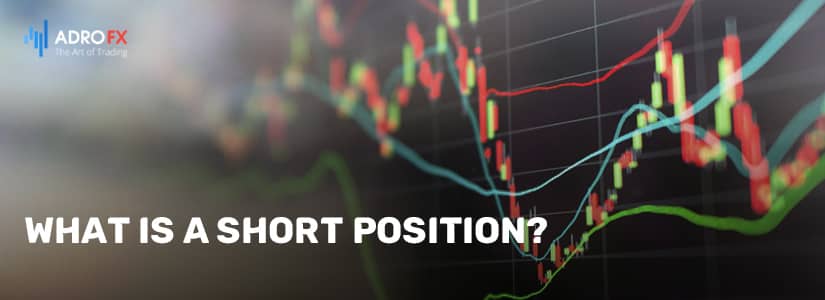What Is a Short Position?

In exchanges, one earns not only on the rise but also on the collapse of quotes. This amazing strategy is used by "bears" - traders who benefit from the "sinking" of securities and other assets.
Because of the high speed of collapses relative to long rises, these operations are also called "shorts", "short positions" or "short selling". During crises, short positions make it easy and fast to make a fortune.
In 1992 the well-known American trader George Soros and his partners from the Quantum Fund analyzed the currency market and noted that the pound sterling was unstable.
The shrewd financiers decided to play on probability and bet 15 billion dollars against the stagnating British pound. As a result, Soros and his associates collapsed the currency of the whole country and became billionaires. History has dubbed this day "Black Wednesday".
What is a Short Position in the Stock Market?
Placing a short position is a bet that the price will go down.
The scheme is as follows: the trader borrows shares from a bank or broker. He sells them and waits for the quotes to fall, so they can use the proceeds to buy more shares.
For example, you sell a stock for 100 dollars. When their price falls to 70, you buy them again and return them to the bank, while you keep the 30 dollars. This is a simple example of what a short position in stock trading is and how one earns some yield on it.
To short, in simple terms, is to take advantage of price declines. Sell a stock at a "peak" price, wait for a collapse, and buy the stock at a low price.
A trader who generates income on declines is said to be "shorting."

How Short Selling Works in Stock Trading
When stock prices are down, it's a "bearish" time. The bearish way of shorting in the stock market is more dangerous than the steady earnings of "bulls" on long positions. You can earn a substantial income on short trades, but it is even easier to lose funds and get into debt. This is especially true for beginners.
The strategy of bears is built on the expectation that stocks of interesting companies will soon go down in price. A bear must be a good analyst, not just a lucky person. They are constantly studying the financial market and the news. The bear's decision to short may be influenced by the following events:
- Stagnation in the affairs of the CB issuer;
- Financial crisis;
- The volatility of currencies;
- Change in the management of the issuing company;
- Sluggish sales of their products (including seasonal);
- Negative geopolitical events;
- Changes in the law;
- Sanctions against the state;
- Pandemics;
- Domestic economic problems;
- Panic stock market collapses;
- Bad news in the media.
These events work in favor of the bears and stocks plunge. But sometimes expectations do not come true and the bears' hopes burst like a bubble. Instead of losing ground, the stock rises. Suppose a stock was worth $10. The bear sold it, and then its price jumped to $20. In this case, the trader suffers a loss. Not only does one have to return the stock to the broker, but he also has to pay the difference in prices.
Novice traders should not start with shorts. Shorts are very different from the more stable bullish trades (buy and forget for a long time). Shorting a stock tends to be for a short period of time. This is due to the fact that borrowed shares need to be returned to the broker more quickly. After all, you have to pay a commission for each day you use the stock.
By lending securities, the broker is also taking a risk. That's why the stock exchanges have restrictions for bears. They are only allowed to short stocks of large liquid companies. There are limits on volumes as well.
The main rule for short trades on the exchange: before you open shorts, be sure to close all long positions.
Which Stocks Can Be Shorted?
Shares with maximum daily turnover are suitable for shorting. In addition, stocks with less liquidity should be avoided for shorting.
Changes in quotes are closely tied to dividend payouts. To receive dividends, there is no sense to hold stocks all year long. It is enough to have them in hand on the day of the ex-dividend date (closing of the list of dividend recipients).
After dividends are paid, the value of securities falls. This period is called the "dividend gap" when stocks drop in value commensurately with the amount of dividend payments.
For example: before the gap, a share was worth 25 dollars. The dividend payment was 2 dollars.
As a result, the share price fell to 23 dollars.
Widespread schemes of earning on dividend-paying shares:
Buying shares after the list of shareholders is closed. At this time, they become cheaper. We wait for quotes to rise and sell it at a higher price. This is how we benefit from the price difference.
We buy the stock a few months before the ex-dividend date, with the expectation that it will rise in value before the dividend is paid. Then we sell it. We don't get dividends, but we earn on the price difference. This is not a classic "bearish" strategy, because the earnings are closer to "medium-speed".
It is possible to get a return not only from the growth of quotes but also from their decline. For example, we sell stocks before the ex-dividend date and then buy them after the dividend payout. This strategy is called "shorting before the ex-dividend date" and "shorting the dividend gap" to achieve a yield on it. The collapse of the stock at this time passes quickly, and such a transaction refers to classic shorts.
You can find out about the approximate value of the stock after the gap in advance, based on last year's payouts. Such information can be obtained from the ex-dividend dates list, which contains the closing dates of the shareholder list and dividend amounts. You can get this information from brokerage websites.
A short dividend position on the ex-dividend date is not a very good idea, because it is difficult to predict the exact value of the stock after a drawdown. The result can be frustrating for the inexperienced trader.
To "lease" shares, some brokers temporarily "borrow" them from other shareholders who may not realize they have been temporarily delisted. In this case, the broker immediately deducts a tax + the dividend amount from the trader.
To short on a dividend gap means to earn by selling shares at the "peak" of their value (before the ex-dividend date) and then buying them back when their price falls.
For example, you can sell a stock for 15 dollars and buy it after the dividend gap of 13 dollars. After the ex-dividend date, the stock drops by the amount of profit excluding taxes. This should be taken into account when calculating net profit.

Why You Shouldn't Short Without a Hedge?
If a beginner wants to take advantage of short trading, they must have some insurance in order to be able to close a position quickly at a certain moment. Experienced financiers recommend that beginners do not take up many shares at first, and make sure to use a Stop Loss for safety.
A Stop Loss is an order to stop a transaction when the price reaches a certain level, in order to avoid losing even more.
It is difficult for a trader to constantly sit in front of a monitor and follow the fluctuations of the chart. It is even more dangerous to work in periods of strong quote fluctuations (high volatility). Automatic Stop Loss, which is set on the terminal, keeps the process under control at all times.
It will also limit the risks in case of technical failures on the Internet. Imagine you've made a trade and your connection to your ISP goes down. You lose control over the trade and cannot order the broker to close it in time.
Short Positions and Dividends

As we have already mentioned above, after the ex-dividend date, the issuer's shares drop in value by the amount of the dividend.
If you open a short position before dividends, you will be charged the dividend amount. Therefore, your drawdown gains may remain at zero. In addition, the dividend will be withheld along with taxes, because the fall in the stock is usually reduced by the amount of taxes as well. Some brokers prohibit traders from holding shorts at the time of the dividend payments and forcibly close them at existing market quotes.
While possible losses are limited to 100% when buying shares, future gains have no limits. Shares can increase in price by 100, 200, or 300%. In the case of short positions, everything is quite the opposite. Returns are questionable, while losses can be huge and put an end to the bear's career forever. This is what it means to short in the stock market.
For example, the trader sells 20 shares at a price of 100 dollars each. He got 2,000 dollars. But instead of the expected reduction, the shares jumped in price and their value amounted to 150 dollars apiece. As a result, the investor is forced to buy the shares at the price of 20 x 150 dollars = $3,000. As a result, losses will make up 1,000 dollars. In addition to that, it is necessary to pay the brokerage fee and taxes on transactions.
If the trader decides not to close the deal and waits for the quotes to rise, their losses can increase manifold. When losses from the short reach a critical level, the broker sends a margin call to the investor. In this case, the investor must either close the position immediately or replenish the account to the level when the amount of funds will exceed the losses.
If the trader does not meet the margin call conditions, the broker will forcibly close the short position at the prices, which exist on the market at that moment.
Given this situation, shorts should be executed when there is the confidence that the possibility of a decline in the stock price exceeds the probability of their growth.

About AdroFx
Established in 2018, AdroFx is known for its high technology and its ability to deliver high-quality brokerage services in more than 200 countries around the world. AdroFx makes every effort to keep its customers satisfied and to meet all the trading needs of any trader. With the five types of trading accounts, we have all it takes to fit any traders` needs and styles. The company provides access to 115+ trading instruments, including currencies, metals, stocks, and cryptocurrencies, which make it possible to make the most out of trading on the financial markets. Considering all the above, AdroFx is the perfect variant for anyone who doesn't settle for less than the best.









